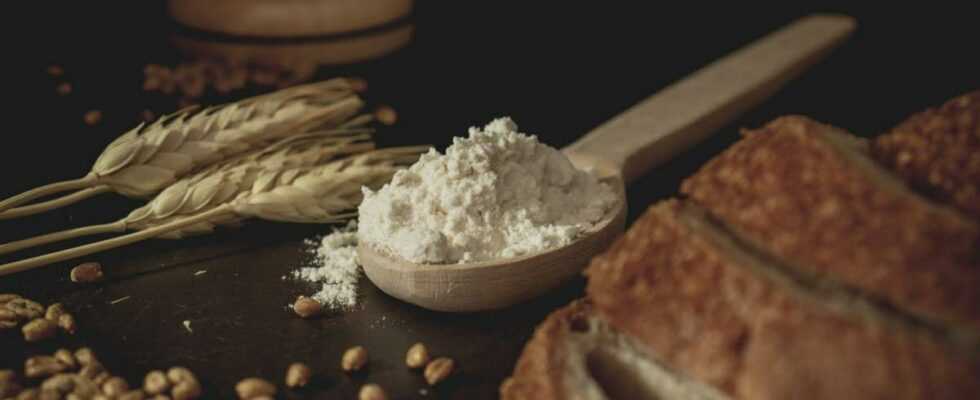From grain to flour
The grain of wheat is made up of:
- bran: the protective envelope of the grain;
- albumen: the heart of the grain, rich in starch and gluten;
- of the germ.
When you grind the whole grain, you get wholemeal flour with unparalleled nutritional properties. But this flour goes rancid quickly because of the fat present in the germ.
Wholemeal flour contains the bran and albumen of the grain. It is a brown flour, rich in fiber and vitamins. But being low in gluten, it is refined in order to improve its properties for bread-making.
This is how white flour (or flower flour) is obtained, which contains only ground albumen. It is white, not very nutritious, but suitable for many modern recipes.
In France, the types of flour are classified according to their degree of refining:
- T150: integral;
- T110: complete;
- T80: semi-complete (or bise);
- T55: classic;
- T45: white or flower.
When to choose wholemeal flour?
Wholemeal flour is nutritious and tasty. It is suitable for people concerned about their health as well as for rustic recipes such as homemade breads, cereal pancakes or sweet and savory pies.
Since it contains little gluten, it gives pasta with little cohesion and elasticity. They are therefore reserved for shortbread, crumbles or compact breads. It is easily used in recipes containing a high level of humidity such as pancakes, soft cakes, cakes, etc.
When to choose white flour?
White flour has a neutral taste and pale color which makes it ideal for making recipes with subtle flavors. It is used in particular in baking or to thicken preparations.
The whiter the flour, the more gluten and starch it contains. It is thus particularly recommended for making leavened doughs (puffed breads, brioches, pizza doughs, etc.) and elastic doughs (choux pastry, puff pastry, etc.).
